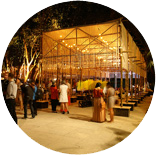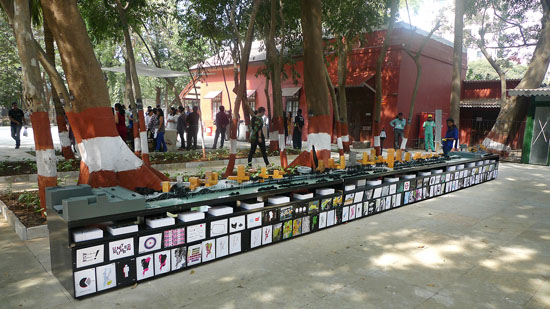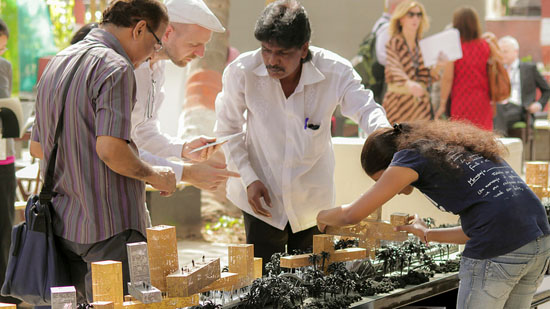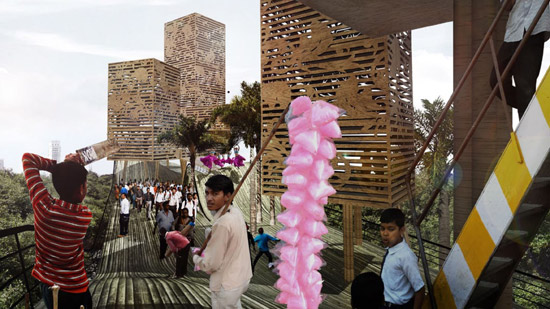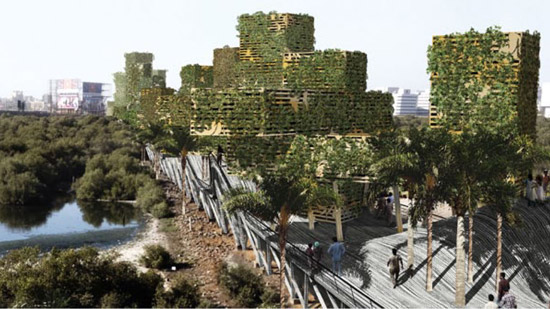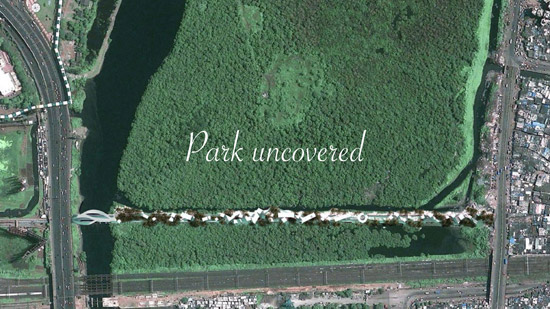Landlink Design Prototype
The Tansa Pipelines constitute a unique urban conduit. These large water distribution pipes cut through roughly 75 km of Mumbai’s dense urban tissue, passing alongside the University of Mumbai and the Indian Institute of Technology and crossing the Vasai River to reach the massive Bhiwandi industrial zone. Within the foreseeable future, these pipelines will lose functionality, while their actual infrastructure probably will remain in place.
In consultation with his fellow Mumbai Lab Team Members, architect Neville Mars has developed a pilot project—the Landlink—for the specific stretch of pipes that run between Dharavi and Bandra. Positioned just west of the Sealink, and crossing the water of the Mithi River on top of the pipes, this project rethinks the design, functionality, and organizational possibilities of Mumbai’s bridge developments. In three distinct layers placed on top of the pipes, the Landlink eventually combines an auto rickshaw highway and a pedestrian connection between several neighborhoods, while simultaneously providing a large public domain located right at the geographic heart of Greater Mumbai.
The Landlink is designed for a phased development in three steps. During the first phase, auto rickshaws lanes would be inserted between the pipes to improve the connection between two of the city’s prominent hubs of production: Bandra and Dharavi. Secondly, a bamboo deck resting on the existing pipeline foundations would be constructed to accommodate pedestrian traffic. This deck would be wide enough to accommodate large public festivities, as well as more of the quiet space that is so hard to find in the neighboring areas. Curves that lift the deck up in places create small covered plazas for informal commercial activities. In the third phase, NGOs and small businesses would be invited to construct structures for small classrooms, offices, and health centers and other recreational spaces on top of the deck. The Landlink would steadily become an alternative to the conventional Central Business District.
This work was created by Neville Mars in connection with the BMW Guggenheim Lab project, a project of the Solomon R. Guggenheim Foundation, and is licensed under a Creative Commons Attribution 3.0 Unported License.

